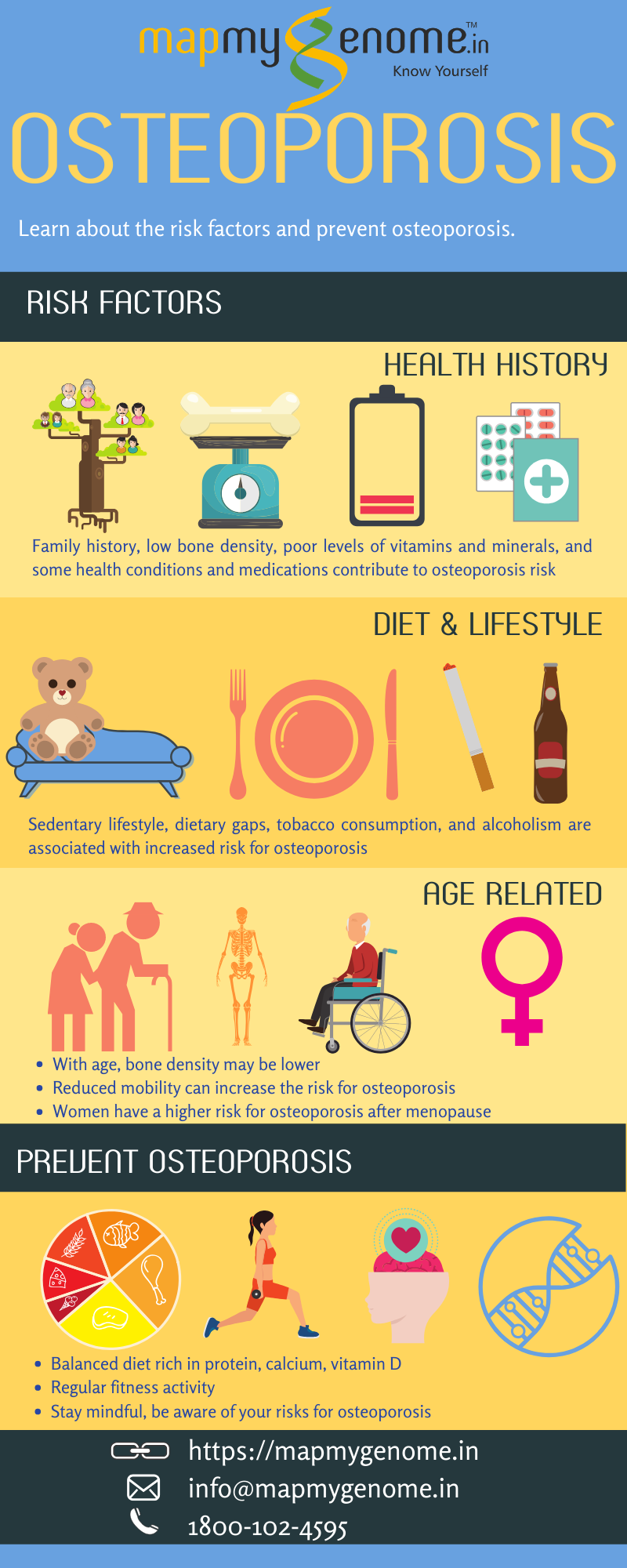World Osteoporosis Day
Oct 19, 2019
4096 Views
World Osteoporosis Day is observed on the 20th of October of every year. This day is dedicated to raise awareness for early diagnosis, prevention, and treatment of Osteoporosis.
Osteoporosis is a skeletal condition, which leads to thinning of bones, mainly due to deficiency of minerals such as calcium. Mineral deficiency leads to reduced bone density, which is characterized by brittle bones that are prone to fractures. Individuals with osteoporosis often experience multiple fractures in the long bones of arms and legs, and also in the spine. Osteoporosis hinders movement and causes bone pain.
Genetic factors play a critical role as a risk determining factor for Osteoporosis, but dietary and lifestyle modifications can help us prevent it. Also, identifying early signs and symptoms, can help people take tangible steps to monitor Osteoporosis. Reduction in bone mineral density is a natural process after mid-20s, but incorporating an adequate amount of calcium, proteins, and vitamin D in our everyday diet can help us reduce our risk of Osteoporosis.
Also, having a sedentary lifestyle poses a negative impact on bone health. On an average, adults are sedentary for 5.5 hours per waking day — a number that is on the rise. According to British Heart Foundation (2015), the number of sedentary hours increase by about half an hour every five years over the age of 65. Inactivity among adults promotes the activity of cells that resorb bone (osteoclasts), as a response to disuse or inactivity.
Older adults lose bone mass with natural ageing. With age, the ability to create new bone decreases while disuse continues to occur. Reduced physical activity in sedentary adults adds to the risks of thinning of ageing bones. In addition, bones are exposed to higher impact forces due to loss of muscle mass, which is accelerated by a sedentary lifestyle.
According to the International Osteoporosis Foundation, a 10% increase in peak bone mass in childhood can reduce the risk of an osteoporotic fracture in adulthood by 50%. A recent study conducted by HCJMR Institute, Pune, India, reported an increased risk for osteoporosis among Indian men. In women, there is a sharp decline in bone mineral density after menopause, thereby increasing the risk of osteoporosis. Thus, both Indian men and postmenopausal women need necessary measures to prevent osteoporosis during later years in life.

How Can Mapmygenome Help You?
Mapmygenome offers personal genomics based healthcare solutions for a healthier and happier life. With a simple swab of saliva, you can learn about your genetic predisposition to 100+ health conditions, traits, and habits. Our genetic counsellors then correlate the report findings with your health history. They give you a bigger picture about your health and suggest interventions that enable you to make informed choices about your health. All this information is given to you in a comprehensive secondary report. We also offer nutrition counselling that can help you bridge gaps in nutrition levels. Our genetic counsellors can also advise your nutritionists and personal trainers in formulating diet and fitness plans. To learn more, write to us at info@mapmygenome.in, call 1800-102-4595, or visit https://mapmygenome.in. Today!
Works Cited
- Genetics Home Reference
- World Osteoporosis Day, 14 Oct. 2013, www.worldosteoporosisday.org/home.
- The University of Sheffield. “Sedentary Behaviour and Bone Health.” FutureLearn, 2019, www.futurelearn.com/courses/musculoskeletal/0/steps/25161.
- Kadam NS, Chiplonkar SA, Khadilkar AV, Khadilkar VV. Prevalence of osteoporosis in apparently healthy adults above 40 years of age in Pune City, India. Indian J Endocr Metab, 2018 [cited 2019 Oct 19];22:67-73. Available from: http://www.ijem.in/text.asp?2018/22/1/67/225003
- International Osteoporosis Foundation. “Preventing Osteoporosis.” IOF International, 2019, https://www.iofbonehealth.org/preventing-osteoporosis

